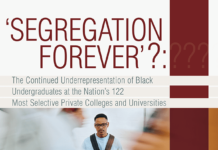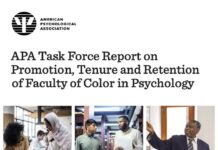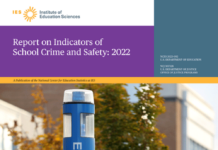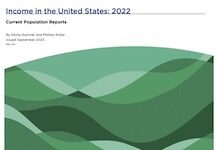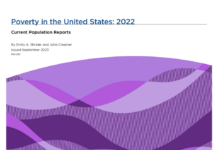Black Students Remain Underrepresented at the Nation’s Most Selective Colleges and Universities
A new report from the Education Trust finds that even with the practice of race-sensitive admissions at selective colleges and universities in the United States for the past half-century or more, Black students remain underrepresented at these elite institutions. And the progress toward equality has been slow.
Addressing the Barriers Faced by Black Fathers Who Attend College
A new study from the Center for Law and Social Policy finds that 72 percent of all Black student fathers attending public four-year institutions leave college without earning a degree or other credential. Black student fathers comprise 19 percent of student parents and are less likely than their peers to have access to public benefits programs like childcare assistance.
White and Black Children Categorize Racially Ambiguous Faces Differently
New research by psychologists at Duke University and the University of Chicago finds that Black and White children and adults categorize racially ambiguous faces differently. White people more often see multiracial faces as Black, whereas Black people more often see multiracial faces as White.
Addressing the Lack of Diversity in Faculty Ranks in Psychology
A new report from the American Psychological Association states that an academic workforce that represents demographic changes within the student population and the larger U.S. society as essential to a vital and accurate psychological science that is relevant in the 21st century.
Department of Education’s Latest Data on Campus Hate Crimes
In 2020, of the more than 21,200 criminal incidents that occurred on the campuses of postsecondary institutions and were reported to police or security agencies, 571 incidents were classified as hate crimes. In 2020, race was the motivating bias in more than half of on-campus hate crimes.
Report Alleges Hostile Racial Environment in the School of Education at the University of...
The report followed the departure of four women of color faculty from the School of Education. The report stated that these women had been “pushed out” through various microaggressions and other abuses.
Is the Black-White Income Gap Finally Shrinking for Good?
In 2019, the median Black household income was 59.7 percent of the median income of non-Hispanic White families. In 2022, In the income gap was 65.2 percent.
Study Finds Blacks More Likely to Live Behind Decaying Levees Than Whites
While nationwide the disparity for Blacks is less than 20 percent, there are high levels of disparity for Black populations behind levees in Kentucky (284 percent) and Tennessee (156 percent).
Census Bureau Offers a Breakdown of the Black Population in the United States
The Black population is often talked about in the media as a monolith. But in fact, the Black population is quite diverse. New data from the U.S. Census Bureau offers a breakdown on the Black population in the U.S.
The Official Poverty Rate for African Americans Is the Lowest in History
The bad news is that in 2022, the Black poverty rate was still more than double the rate for non-Hispanic Whites. In 2022, 22.3 percent of all Black children lived in poverty.
Prior to the Pandemic, White Children Were Three Times as Likely to Be Homeschooled...
In 2019, some 4 percent of all White children were homeschooled, compared to 1.2 percent of Black children. Thus, Whites were more than three times as likely as Blacks to be homeschooled. The most commonly reported reasons for homeschooling were concern about the school environment.
Study Finds That Protesting NFL Players Who ‘Took a Knee’ at 2016 Games Were...
A recent study by scholars at the University of Colorado Boulder, the University of Connecticut, and Pennsylvania State University examined the career trajectories of the first 50 NFL athletes to kneel in protest during a pregame national anthem in 2016.
Education Department Debuts the Equity in Education Dashboard
The website is divided into a series of domains, each of which includes a set of indicators. The indicators highlight disparities in education among population groups, including differences by race/ethnicity, sex, socioeconomic status, English learner status, and disability status.
Twenty Years After Law School, Many Black Attorneys Still Face Overwhelming Student Debt
A study of students who graduated from law school between 1998 and 2000 found that some 73 percent of Black law school graduates still held student loan debt, 20 years after earning their law degree. Twenty years later, the average debt outstanding for Black law school graduates was more than $74,000.
Research Finds Significant Racial Inequalities in Public Subsidized Housing
Using data from the U.S. Department of Housing and Urban Development, researchers found that Black subsidized renters, on average, pay $75 more per month than their White counterparts — a 17 percent upcharge. Black subsidized renters live in units with more unsafe conditions while simultaneously paying more, both in total cost and relative to their income.
How Race Has Become a Factor in Auto Insurance Rates
Across the country, consumers with good driving records but with poor credit annually pay hundreds or even thousands of dollars more for the basic auto insurance coverage mandated by state laws. Because credit history correlates to race and income, raising premiums on drivers with lower credit disproportionately harms low-income consumers and people of color.
Study Finds Persisting Occupational Segregation Among Similarly Educated Blacks and Whites
A new working paper from the National Bureau of Economic Research finds that over the past 20 years, the percentage of Black workers with a bachelor’s degree rose from 18.9 percent to 28.3 percent. Yet, despite educational gains, there has not been a reduction in the racial wage gap, mainly due to the fact that Blacks with a college degree continue to face occupational segregation.
Report Finds That Large Numbers of Black Students Are Not Comfortable on Ohio Campuses
A new study by the Ohio Black Student Association finds that large numbers of Black students at colleges and universities in the state reported negative experiences relating to their race. The project surveyed students at nine public four-year universities and three private universities.
Yale Study Finds Huge Racial Disparity in Death Rates Due to Exposure to Fine...
The study found that on average, there were 202.70 deaths per 1 million White people each year due to exposure to high levels of fine particulate matter. But, there were 279.24 deaths per 1 million Hispanic people, and 905.68 deaths per 1 million Black people each year.
How to Create a Search Process to Boost Diversity in STEM Faculty
A team of biomedical researchers from 16 top engineering programs in the nation has developed a set of processes that helps eliminate traditional barriers to historically excluded groups pursuing academic careers in biomedical engineering.
Study Finds Blacks Are More Likely Than Whites to Be Jumped in the Emergency...
A new study by researchers at Yale University finds that nearly one third of emergency room patients are jumped in line, with those from marginalized groups — including lower-income patients, non-white patients, and non-English speakers — more likely to be cut by others.
New Study Examines Disparities in Black Maternal Mortality by State
In 2019, the national maternal mortality ratio for all women in the U.S. was 32.1 per 100,000 live births. In Arizona, New Jersey, New York, and Georgia, each state had a maternal mortality ratio greater than 100 for 100,000 live births. This is triple the national average.
How Investors Have Thwarted Black Home Ownership and Widened the Racial Wealth Gap
New research from the Georgia Institute of Technology shows investors are most likely to push out Black, middle-class homeowners from neighborhoods. Collectively, Black people in the Atlanta area lost more than $4 billion in home equity over a 10-year period because of investors, according to the research.
How Artificial Intelligence Can Identify Biases in the Jury Selection Process
Using natural language processing tools to analyze transcripts from 17 South Carolina capital cases, researchers determined that prosecutors asked questions with significant differences in the length, complexity, and tone of the questions to potential African-American jurors versus those posed to potential White jurors.
Number of African American Suicides on the Rise
In 2022, 3,825 African Americans committed suicide. There was a 3.6 percent increase in the number of Black suicides in 2022 compared to a 2.1 percent increase among Whites. According to the American Psychiatric Association, African Americans often receive poorer quality mental healthcare and lack access to culturally competent care.
Examining the Impact of Race and Ethnicity on the PostDoc Hiring Process
The authors found that only 9 percent of all applicants were seriously considered for the postdoc positions. White applicants were among the most likely to reach that stage, along with women who identified as Black, Latina, or Native American. Black, Latina, or Native American women were the most likely to be interviewed but the least likely of the interviewed candidates to be offered the job.
University Study Finds Racial Discrimination in the Municipal Bond Market
The analysis found that communities with majority Black residents face larger credit spreads on municipal bonds than communities with non-Black majorities. Applying this borrowing penalty to the entire municipal bond market results in Black Americans paying an estimated $900 million in additional interest costs each year.
Racial Differences in Residential Mobility in the United States
In 2022, 4,275,000 African Americans moved. This was 9.8 percent of the Black population. In contrast, 8 percent of the non-Hispanic White population changed their residence in 2022. Slightly more than 5 percent of all African Americans who moved, left the country. Only 2.7 percent of non-Hispanic Whites who moved, left the United States.
Study Finds Vast Racial Disparities in Attrition Rates From M.D./Ph.D. Programs
A new study led by Mytien Nguyen, a student at Yale Medical School, finds that Black M.D./Ph.D. students are 83 percent more likely than White students to leave medical school and 50 percent more likely to graduate with only a medical doctorate. In total, 29 percent of Black students did not complete their full M.D./Ph.D. training, compared to 17 percent of White students.
The Persisting Inequalities Facing the 19 HBCU Land-Grant Universities
A new report from The Century Foundation shows that the 19 historically Black universities that are also 1890 land-grant colleges have not received the same level of federal financial support that has gone to predominantly White land-grant institutions.
African Americans Are Making Progress in Winning Seats on Corporate Boards of Directors
Just over three-quarters (76 percent) of public Fortune 1000 companies had at least one African American director on their board as of September 2022, compared with 61 percent at the end of 2020. All of the 100 largest companies had at least one African American director.
Racial Differences in Financial Aid Awards
At the graduate level, Whites were slightly more likely than Blacks to receive grants but the average grant to Whites was $1,900 more than the average grant to women. Nearly 11 percent of White graduate students were graduate assistants compared to 7.6 percent of Black graduate students. More than 60 percent of Black graduate students took out loans compared to 41 percent of Whites.
More Than Half of Students From Africa Who Want to Study in the U.S....
In 2015, Africa had a visa denial rate of 44 percent as compared with 30 percent for students from Asia, and 8 percent from Europe. By 2022, the visa denial rate for African students increased to 54 percent, compared to 36 percent for Asian students and 9 percent for European students.
Blacks and Other Women of Color Are Scarce in STEM Higher Education and the...
A new report from The Education Trust shows that vast disparities in attainment by race, ethnicity, and gender persist in STEM education and employment, thereby limiting access and opportunities for social and economic mobility for some — particularly women and people of color.
Study Finds that Where You Live Determines How Long You Live
A new study by researchers at the Feinberg School of Medicine at Northwestern University in Chicago finds that Black residents living in highly segregated neighborhoods have life expectancies four years shorter on average than residents living in less segregated predominantly White neighborhoods.
The Racial Gap in Weekly Earnings
A new report from the Bureau of Labor Statistics finds that the median weekly earnings of the nation's 121.5 million full-time wage and salary workers were $1,100 in the second quarter of 2023. But there is a persisting racial gap in earnings. African Americans had median weekly earnings of $913. For non-Hispanic Whites, median weekly earnings were $1,126. Thus, Black earnings were 81 percent of their White peers.






